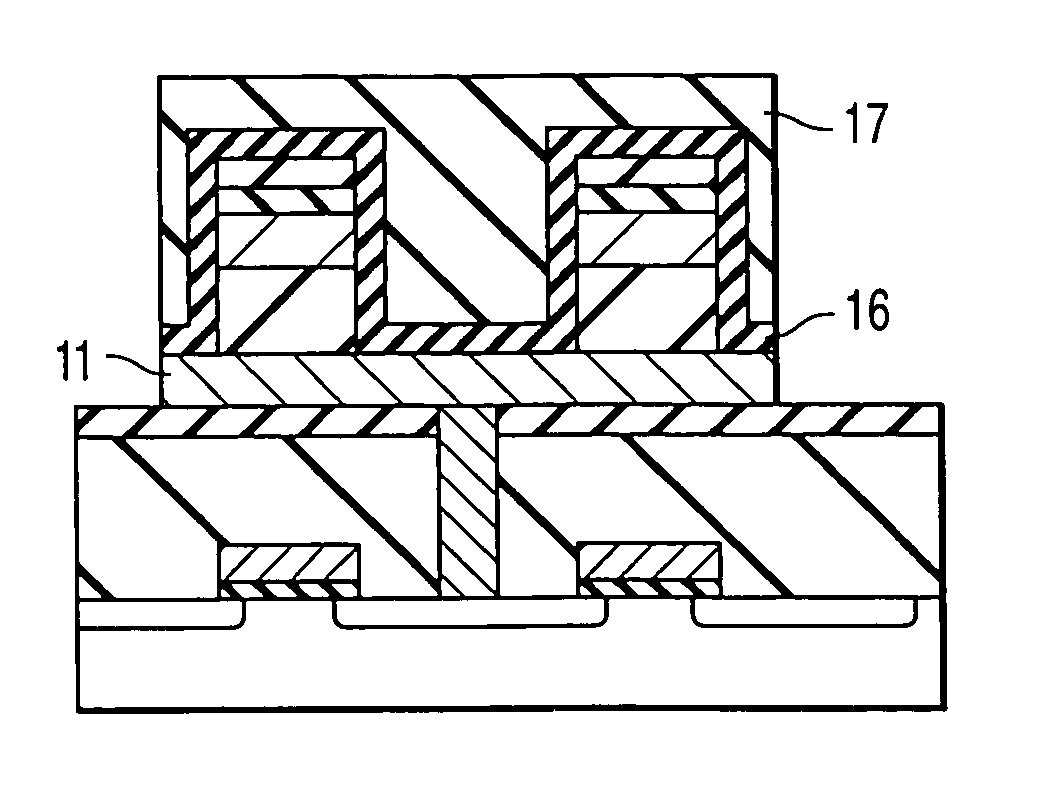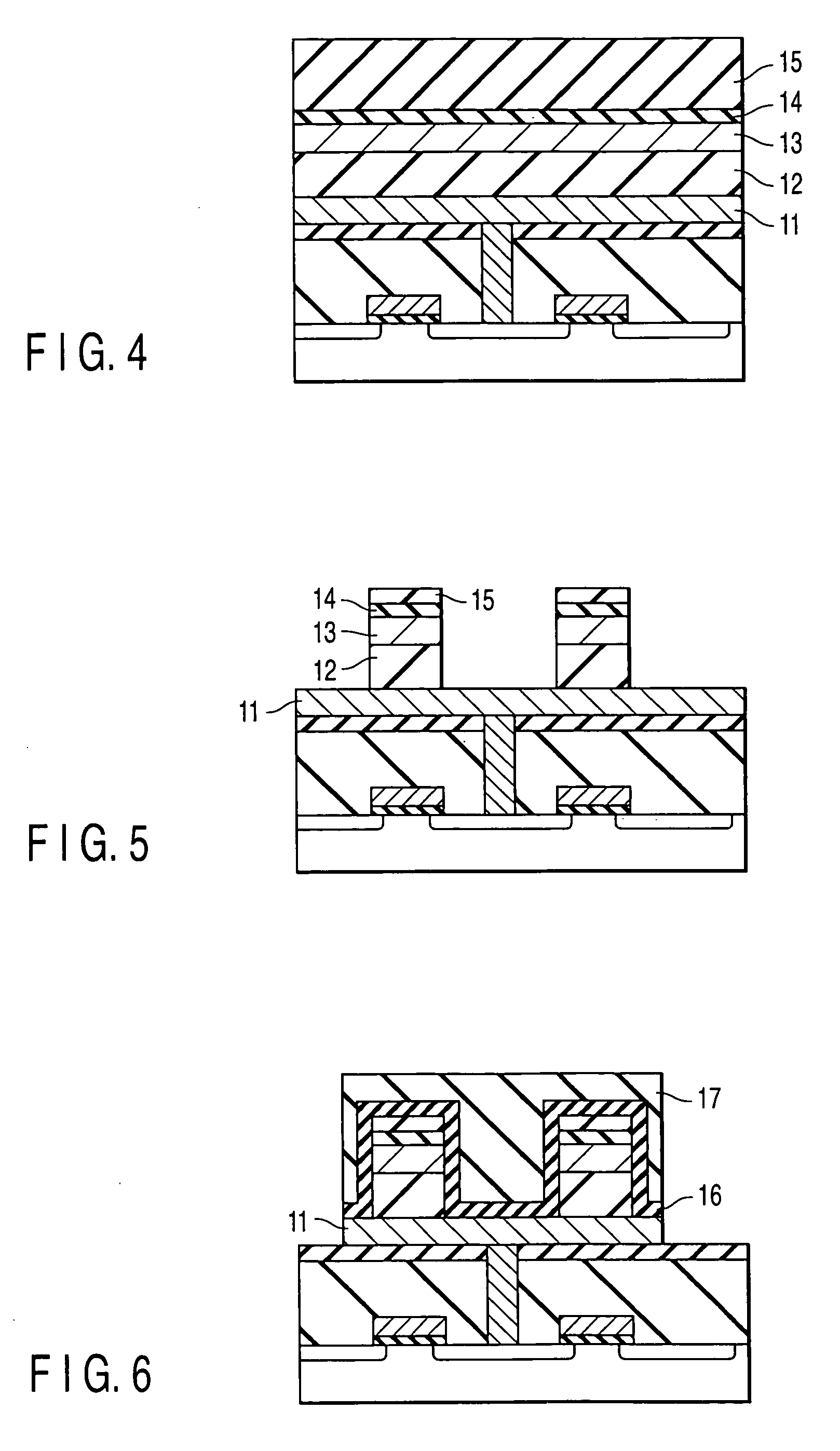Method for manufacturing semiconductor device
a manufacturing method and semiconductor technology, applied in semiconductor devices, capacitors, electrical devices, etc., can solve the problems of capacitor damage, capacitor damage, capacitor failure to exhibit a spontaneous polarization,
- Summary
- Abstract
- Description
- Claims
- Application Information
AI Technical Summary
Benefits of technology
Problems solved by technology
Method used
Image
Examples
embodiment 1
[0049] FIGS. 1 to 8 are cross sectional views collectively showing the process steps included in the manufacturing method of a semiconductor device according to embodiment 1 of the present invention.
[0050] In the first step, an interlayer insulating film 6 and an anti-reflection layer (ARC) 7 that is impermeable to hydrogen are formed successively on a semiconductor substrate 1, followed by forming a resist pattern 8 in direct contact with the ARC 7, as shown in FIG. 1. Formed in the semiconductor substrate 1 is a transistor including a source region 2, a drain region 3, a gate insulating film 4, and a gate electrode 5. It is possible to use, for example, TEOS for forming the interlayer insulating film 6.
[0051] The ARC 7 is required to resist permeation of hydrogen. To be more specific, if the hydrogen diffusion coefficient of a layer at 700° C. is less than 10−11 cm2 / s, the layer can be substantially regarded as resisting permeation of hydrogen. In embodiment 1 of the present inv...
embodiment 2
[0060] It is possible to use a conductive material for forming an ARC, which is impermeable to hydrogen and which is formed between the lower electrode of the capacitor and the TEOS film. The particular construction will now be exemplified with reference to FIGS. 9 to 12.
[0061] First of all, the construction shown in FIG. 9 is formed by the method similar to that for embodiment 1 described above, except that the ARC that is impermeable to hydrogen is formed by using a conductive material. The conductive material that can be used for forming the ARC includes, for example, carbon, chromium nitride such as CrN, titanium nitride such as TiN, tantalum nitride such as TaN, aluminum nitride such as AlN, TiAlxNy, TaAlxNy, TiSixNy, AlSixNy (where x and y denote the component ratio), and silicon carbide such as SiC. It is also possible to use silicon oxycarbide such as SiOC, which is a conductive material, for forming the ARC.
[0062] In the next step, the hard mask 15, the hydrogen barrier f...
embodiment 3
[0065] It is possible to form an ARC that is impermeable to hydrogen on the upper electrode of the capacitor. The particular construction will now be exemplified with reference to FIGS. 13 to 19.
[0066] In the first step, the interlayer insulating film 6, the lower electrode 11, the ferroelectric film 12, the upper electrode 13, the hydrogen barrier film 14 and the hard mask 15 are formed successively on the semiconductor substrate 1 having a transistor formed therein, as shown in FIG. 13. Each of the electrodes and the films noted above can be formed by using the material described previously by a method similar to the method described previously.
[0067] To be more specific, the ARC 7 that is impermeable to hydrogen is formed by using an insulating material on the hard mask 15, followed by forming the resist pattern 8 on the ARC 7. Each of the ARC 7 and the resist pattern 8 can be formed by using the material described previously by a method similar to the method described previous...
PUM
 Login to View More
Login to View More Abstract
Description
Claims
Application Information
 Login to View More
Login to View More - R&D
- Intellectual Property
- Life Sciences
- Materials
- Tech Scout
- Unparalleled Data Quality
- Higher Quality Content
- 60% Fewer Hallucinations
Browse by: Latest US Patents, China's latest patents, Technical Efficacy Thesaurus, Application Domain, Technology Topic, Popular Technical Reports.
© 2025 PatSnap. All rights reserved.Legal|Privacy policy|Modern Slavery Act Transparency Statement|Sitemap|About US| Contact US: help@patsnap.com



